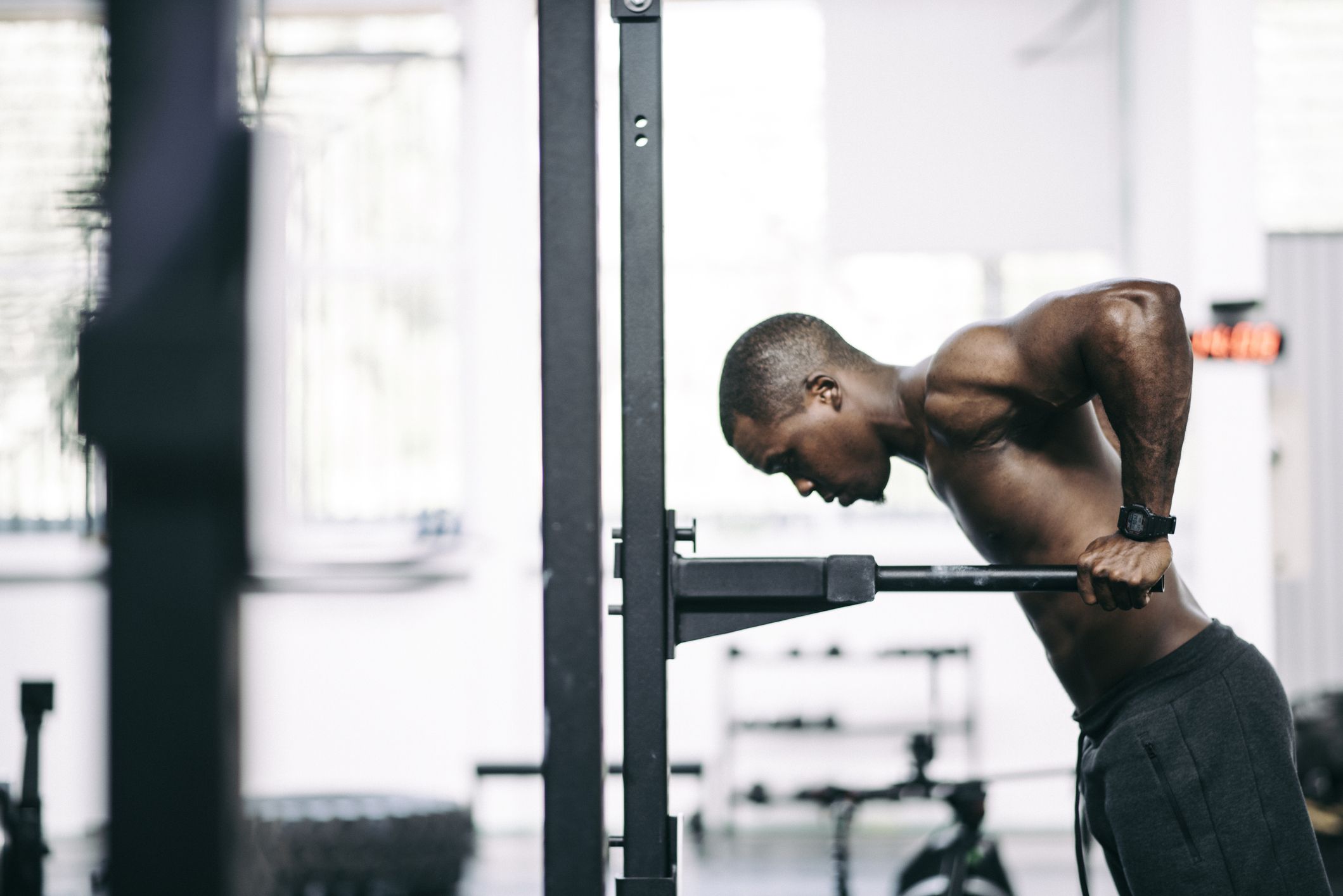Tricep dips are a fundamental exercise that can significantly enhance upper body strength and muscle development. By effectively targeting the triceps, shoulders, and chest, they offer a versatile workout that can be adapted for various fitness levels. This article provides a comprehensive guide on the benefits of tricep dips, the importance of proper form and technique to prevent injuries, innovative variations to keep your workouts engaging, and strategies for incorporating dips into your overall fitness plan. Whether you are a beginner or an experienced athlete, mastering tricep dips can lead to improved strength and functional fitness.
In this article you will find:
Understanding the Benefits of Tricep Dips for Muscle Development
Tricep dips are a powerhouse exercise that offers a multitude of benefits, particularly for those looking to enhance their upper body strength. This compound movement engages multiple muscle groups, providing an efficient workout that can be performed with minimal equipment. In this section, we will delve into the specific advantages of incorporating tricep dips into your fitness routine, focusing on how they contribute to muscle development.
Targeting Key Muscle Groups
One of the most significant benefits of tricep dips is their ability to effectively target the triceps, which are the muscles located at the back of your upper arms. By performing dips, you engage not only the triceps but also the shoulders and chest. This compound nature of the exercise allows for a comprehensive upper body workout, contributing to balanced muscle development.
Enhancing Muscle Hypertrophy
For those looking to build muscle mass, tricep dips can be particularly effective. The exercise creates significant tension in the triceps, leading to muscle hypertrophy—an increase in the size of muscle fibers. When performed consistently and with progressive overload, tricep dips can stimulate muscle growth, making them a vital addition to any strength training program.
Improving Functional Strength
Tricep dips are not just about aesthetics; they also enhance functional strength, which is crucial for daily activities. The strength developed through dips translates to improved performance in various movements, from lifting heavy objects to pushing your body off the ground. This functional benefit is essential for athletes and anyone looking to increase their overall physical capabilities.
Boosting Joint Stability
Another often-overlooked advantage of tricep dips is their contribution to joint stability, particularly in the shoulder and elbow joints. By strengthening the muscles surrounding these joints, dips can help reduce the risk of injuries and improve overall joint health. This stability is especially important for athletes who engage in overhead activities or those who perform other exercises that place stress on these joints.
Accessibility and Versatility
Tricep dips are incredibly versatile and can be modified to suit various fitness levels. Whether performed on parallel bars, a bench, or even a sturdy chair, this exercise can be adapted for beginners and advanced athletes alike. Additionally, the ability to adjust your body angle or add weight can further enhance the challenge, keeping your workouts fresh and engaging.
Conclusion
Incorporating tricep dips into your workout routine can lead to significant improvements in muscle development, functional strength, and joint stability. By targeting multiple muscle groups and offering a range of modifications, tricep dips are an essential exercise for anyone looking to enhance their upper body strength. For more insights on optimizing your workout routine, consider exploring resources from IKAIKA Fitness.
Mastering Proper Form and Technique for Injury Prevention
Mastering the correct form and technique for tricep dips is crucial not only for maximizing the benefits of the exercise but also for preventing injuries. Poor form can lead to undue stress on the joints and muscles, increasing the risk of strains and sprains. In this section, we will explore the essential components of proper technique for tricep dips, ensuring that you can perform this exercise safely and effectively.
Setting Up for Success
Before you even begin your tricep dips, it’s important to set up correctly. Here’s how to prepare:
- Choose the Right Equipment: Use parallel bars, a sturdy bench, or a chair. Ensure that the surface is stable and can support your weight.
- Body Positioning: Position your hands shoulder-width apart on the surface you are using, with fingers facing forward or slightly inward. Your legs should be extended in front of you or bent at the knees for modified dips.
- Maintain a Neutral Spine: Keep your back straight and avoid arching or rounding your shoulders. This position helps maintain proper alignment throughout the movement.
Executing the Dip
Once you are set up correctly, focus on executing the dip with precision:
- Lowering Phase: Slowly lower your body by bending your elbows, keeping them close to your sides. Aim to lower yourself until your elbows reach about a 90-degree angle. This ensures that your triceps are fully engaged without putting excessive strain on your shoulders.
- Raising Phase: Push through your palms to raise your body back to the starting position. Keep your movements controlled to avoid momentum taking over. Squeeze your triceps at the top of the movement to maximize muscle engagement.
Common Mistakes to Avoid
Even experienced lifters can fall prey to common mistakes when performing tricep dips. Here are some pitfalls to watch out for:
- Flared Elbows: Allowing your elbows to flare out can place unnecessary stress on your shoulder joints. Keep them tucked in close to your body.
- Partial Range of Motion: Not lowering yourself enough limits the effectiveness of the exercise. Aim for a full range of motion to engage the triceps properly.
- Using Momentum: Avoid using your legs or swinging your body to complete the dip. Focus on controlled movement to ensure that your muscles are doing the work.
Listening to Your Body
As with any exercise, it’s vital to listen to your body during tricep dips. If you experience pain in your shoulders or elbows, stop immediately and reassess your form. It may be beneficial to perform modified versions of the dip, such as bench dips, until you build sufficient strength and confidence.
Progressing Safely
Once you have mastered the basic tricep dip with proper form, consider incorporating variations or added resistance to continue challenging your muscles. Always prioritize technique over the number of repetitions or added weight to maintain safety. For further guidance on progressing with bodyweight exercises, refer to resources from IKAIKA Fitness.
Innovative Variations to Elevate Your Tricep Dip Routine
Once you have mastered the standard tricep dip, it’s time to elevate your routine by incorporating innovative variations. These variations not only keep your workouts fresh and exciting but also target different muscle groups and improve overall strength. In this section, we will explore several creative tricep dip variations that can take your training to the next level.
Bench Dips
Bench dips are a fantastic alternative to standard tricep dips, especially for those looking to adjust the difficulty level. To perform bench dips:
- Setup: Sit on the edge of a bench with your hands next to your hips, fingers facing forward.
- Execution: Slide your hips off the bench and lower your body by bending your elbows until they reach about 90 degrees. Push back up to the starting position.
This variation focuses on the triceps while also engaging the shoulders and chest, making it a versatile addition to your workout.
Weighted Dips
If you’re ready to increase the intensity of your tricep dips, consider adding weight. This can be done using a dip belt, a weighted vest, or even a plate held between your legs. To perform weighted dips:
- Setup: Attach the weight securely, ensuring it does not interfere with your movement.
- Execution: Perform the dip as you normally would, focusing on maintaining proper form while managing the extra weight.
Weighted dips enhance muscle hypertrophy and strength, making them a great choice for advanced lifters.
Single-Arm Dips
For an even greater challenge, try single-arm dips. This variation requires more core stabilization and balance. Here’s how to do it:
- Setup: Position yourself on parallel bars or a sturdy bench, using one arm to support your weight.
- Execution: Lower your body using the supporting arm while keeping the other arm extended or crossed over your chest. Alternate arms after a set number of repetitions.
This variation not only targets the triceps but also engages your core and improves overall functional strength.
Tricep Dip with Leg Raise
Combining tricep dips with a leg raise adds an element of core work to the exercise. To perform this variation:
- Setup: Start in the standard dip position on parallel bars.
- Execution: As you lower your body into the dip, simultaneously raise your legs in front of you. Hold for a moment at the bottom before returning to the starting position.
This variation challenges your triceps while also engaging your abdominal muscles, making it a comprehensive upper body and core workout.
Exploring Advanced Techniques
As you become more comfortable with tricep dips, consider exploring advanced techniques such as:
- Explosive Dips: Push up with enough force to lift your hands off the bars briefly. This explosive movement enhances power and strength.
- Negative Dips: Focus on the lowering phase by taking 3-5 seconds to descend, increasing time under tension for the muscles.
These advanced techniques can significantly enhance your strength and endurance, pushing your limits further.
Incorporating Variations into Your Routine
Integrating these innovative tricep dip variations into your workout not only keeps things interesting but also promotes continuous muscle growth and strength development. For additional workout ideas and insights on bodyweight exercises, visit IKAIKA Fitness.
Incorporating Tricep Dips into Your Overall Fitness Plan
Tricep dips are a versatile exercise that can play a pivotal role in your overall fitness plan. By effectively targeting the triceps and engaging multiple muscle groups, they contribute to upper body strength and can enhance athletic performance. In this section, we will explore how to seamlessly integrate tricep dips into your fitness routine, ensuring that you maximize their benefits while maintaining a balanced workout regimen.
Establishing Your Fitness Goals
The first step in incorporating tricep dips into your fitness plan is to clearly define your fitness goals. Are you looking to build muscle, improve endurance, or enhance overall strength? Understanding your objectives will help you determine how often and in what context to include tricep dips. For example:
- Muscle Building: If your primary goal is muscle hypertrophy, include tricep dips in your strength training sessions 2-3 times per week, focusing on progressive overload.
- Endurance Training: For those looking to improve muscular endurance, consider integrating higher-rep sets of tricep dips into your circuit training or metabolic conditioning workouts.
- Overall Strength: Combine tricep dips with other compound movements, such as push-ups and pull-ups, to create a comprehensive upper body workout that enhances functional strength.
Creating a Balanced Workout Routine
To fully benefit from tricep dips, it’s crucial to create a balanced workout routine that includes exercises targeting all major muscle groups. Here’s how to do it:
- Upper Body Focus: Pair tricep dips with exercises like bench presses, rows, and shoulder presses to ensure that you are developing all aspects of your upper body strength.
- Lower Body Integration: Incorporate lower body exercises such as squats and lunges to create a full-body workout. This balance helps prevent muscular imbalances and promotes overall fitness.
- Core Stability: Include core exercises like planks and Russian twists in your routine to enhance stability, which is essential for performing tricep dips effectively.
Scheduling Your Workouts
How you schedule your workouts can significantly affect your progress and recovery. Here are some tips for integrating tricep dips into your workout schedule:
- Weekly Split: Consider a split routine where you focus on upper body one day and lower body another. Include tricep dips on upper body days to optimize muscle engagement.
- Full-Body Workouts: If you prefer full-body workouts, incorporate tricep dips as part of your circuit training, allowing for efficient use of time while still hitting all muscle groups.
- Active Recovery: Use tricep dips in lighter, active recovery workouts. Perform them with lower intensity or reduced volume to maintain activity without overtraining.
Tracking Progress and Making Adjustments
To ensure that you are getting the most out of your tricep dip routine, track your progress and make necessary adjustments:
- Set Performance Goals: Aim to increase the number of reps, sets, or weight used over time to keep challenging your muscles and promoting growth.
- Listen to Your Body: Pay attention to how your body responds to tricep dips. If you experience discomfort, consider adjusting your form or the frequency of your workouts.
- Incorporate Variety: Keep your routine fresh by regularly adding variations of tricep dips, as discussed in previous sections, to prevent plateaus and maintain engagement.
Utilizing Additional Resources
For further insights into structuring your fitness plan and enhancing your workout routines, check out resources like IKAIKA Fitness, which provide valuable tips on bodyweight exercises and overall fitness strategies. Tricep dips are a highly effective exercise for enhancing upper body strength by targeting the triceps, shoulders, and chest. They can significantly contribute to muscle hypertrophy, improve functional strength for daily activities, and boost joint stability. To maximize their benefits, it’s essential to master proper form, avoid common mistakes, and incorporate variations such as bench dips, weighted dips, and single-arm dips into your routine.
When integrating tricep dips into your overall fitness plan, clearly define your fitness goals, whether it’s muscle building, endurance training, or overall strength. Create a balanced workout routine that includes exercises for all major muscle groups, and ensure you schedule your workouts thoughtfully. Track your progress by setting performance goals and be attentive to your body’s responses, adjusting your routine as needed. For further guidance, consider exploring additional resources like IKAIKA Fitness for tips on bodyweight exercises.




